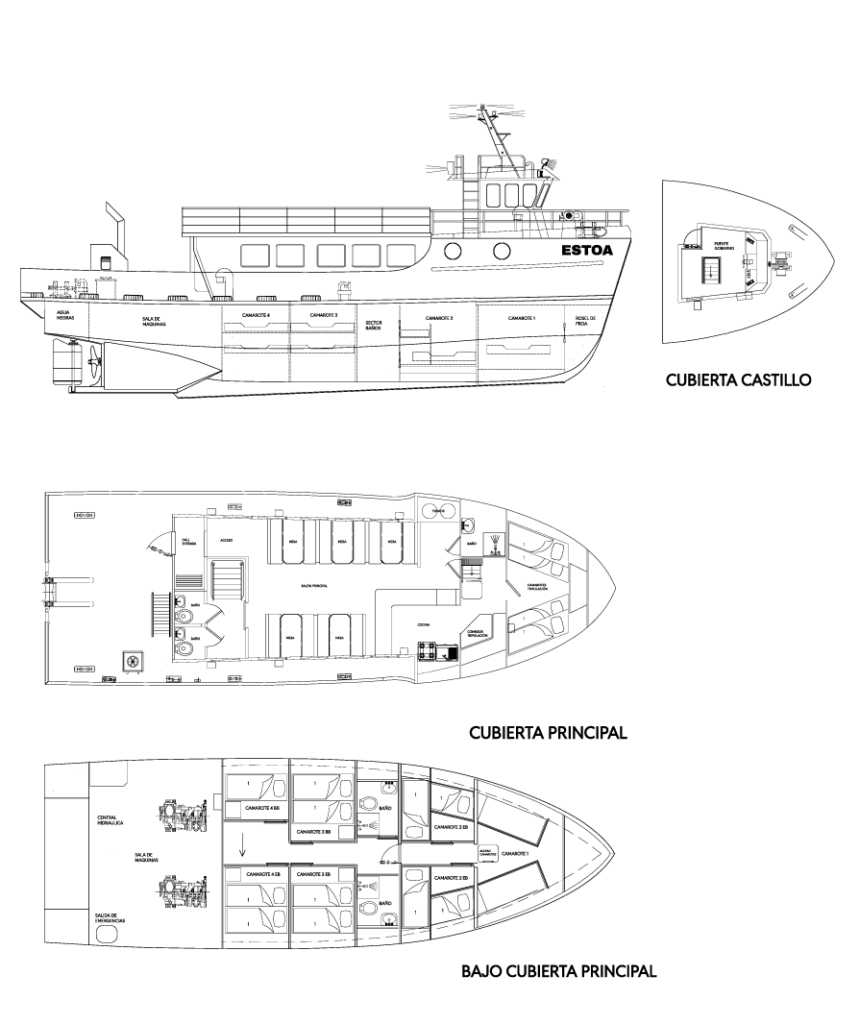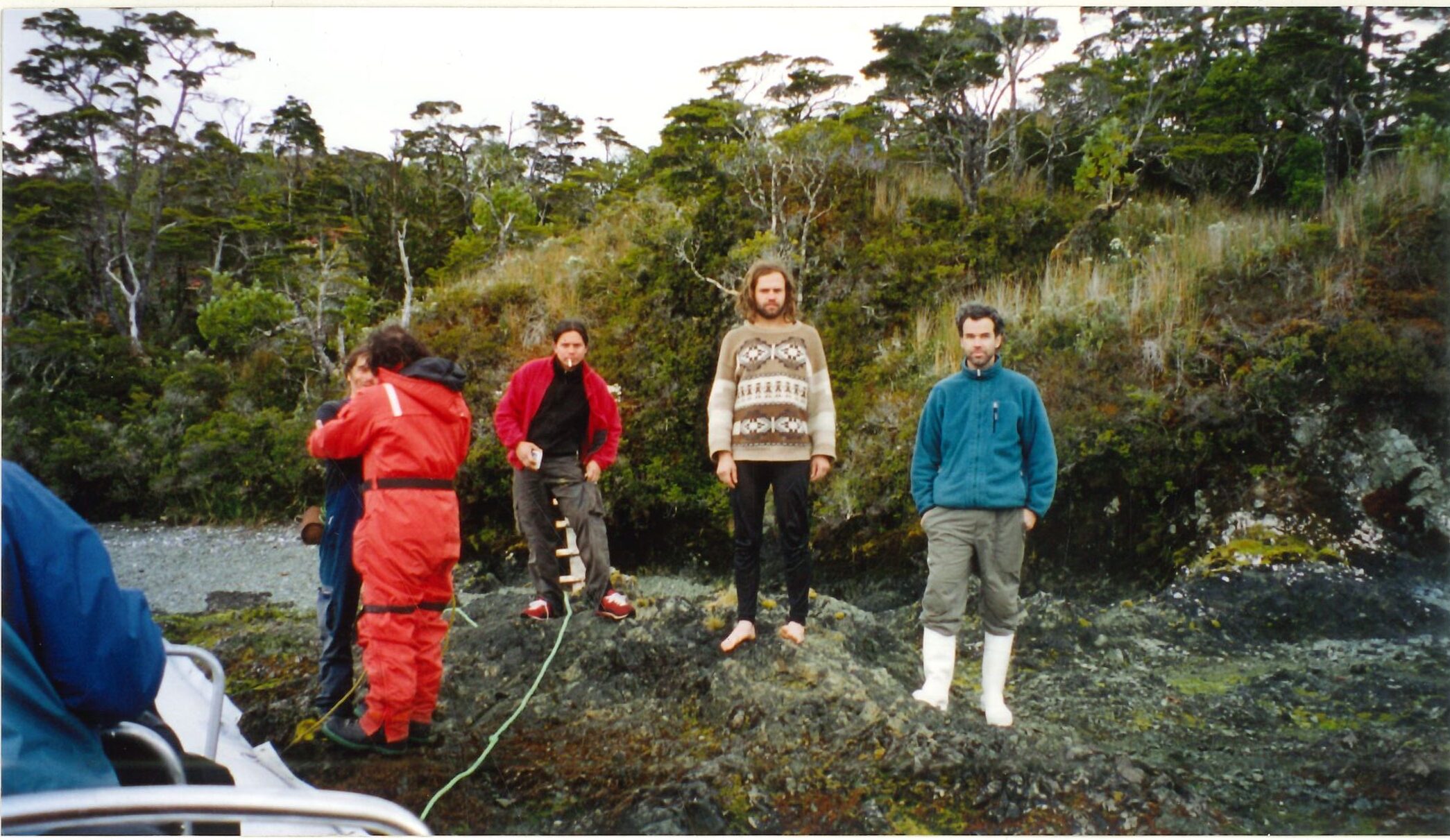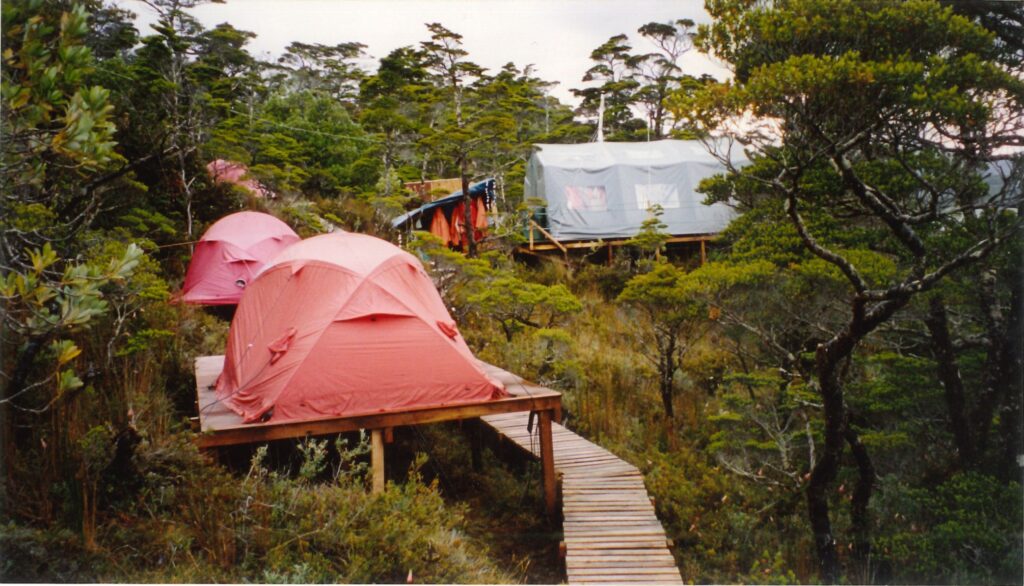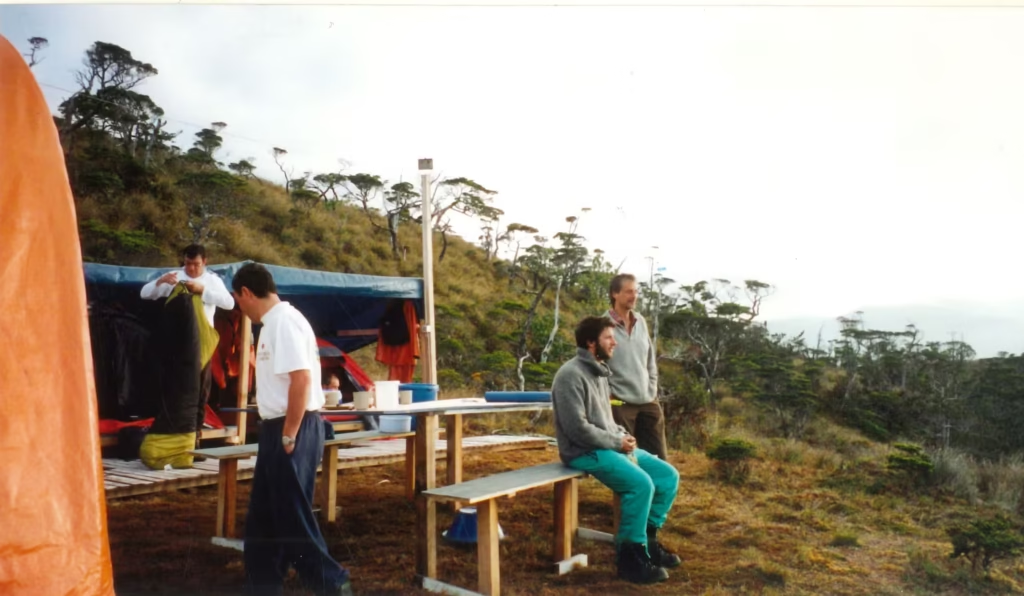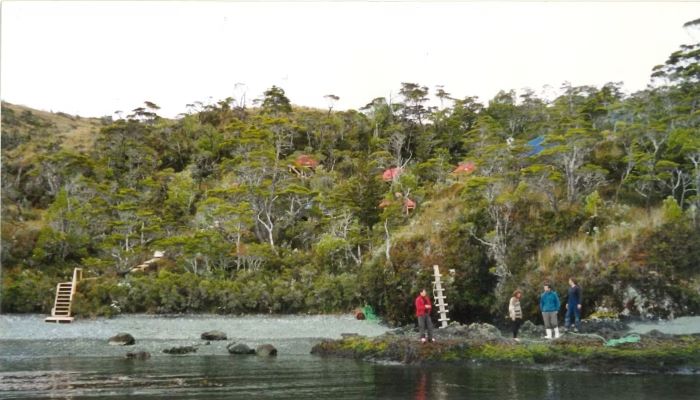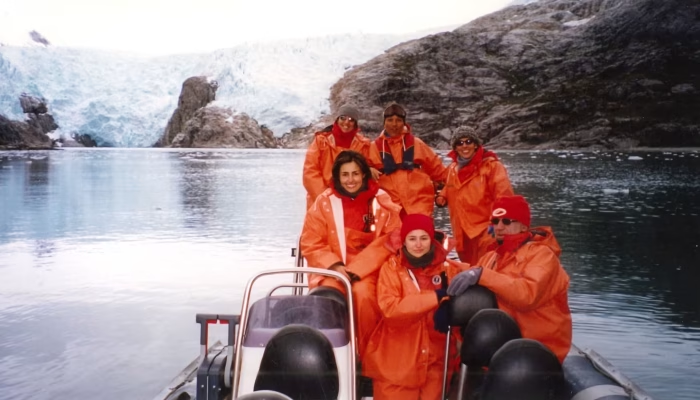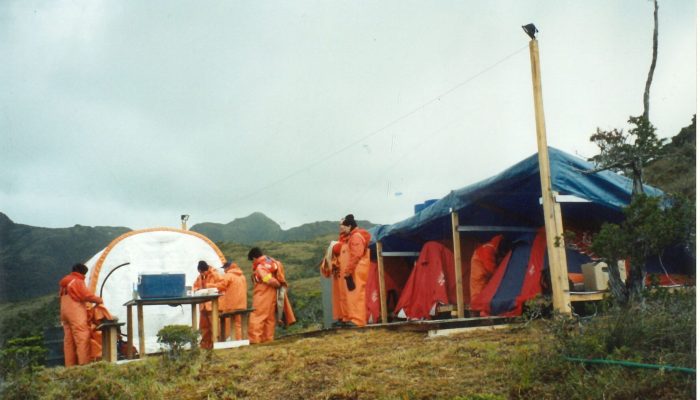Origin
At the end of the last century, a group of young biologists and explorers discovered what remains the only feeding ground for Humpback Whales in the Strait of Magellan. Following this discovery and the associated studies, the first Marine Park in the country was established in 2003 at this location, named "Francisco Coloane Marine Park." At the same time and with the support of the governmental innovation fund (CORFO), the company WHALESOUND was founded as the logistical platform to support research and scientific outreach activities (tourism). The concept: "SCIENTIFIC TOURISM."
In the process, more stakeholders are becoming involved. The authorities are working on the development of a sustainable management plan, and at WHALESOUND we see this as an opportunity and necessity to rethink our management model. Therefore, we are incorporating new equipment and infrastructure to develop new routes that focus not only on large mammals but also on the historical interaction between humans and their environment.
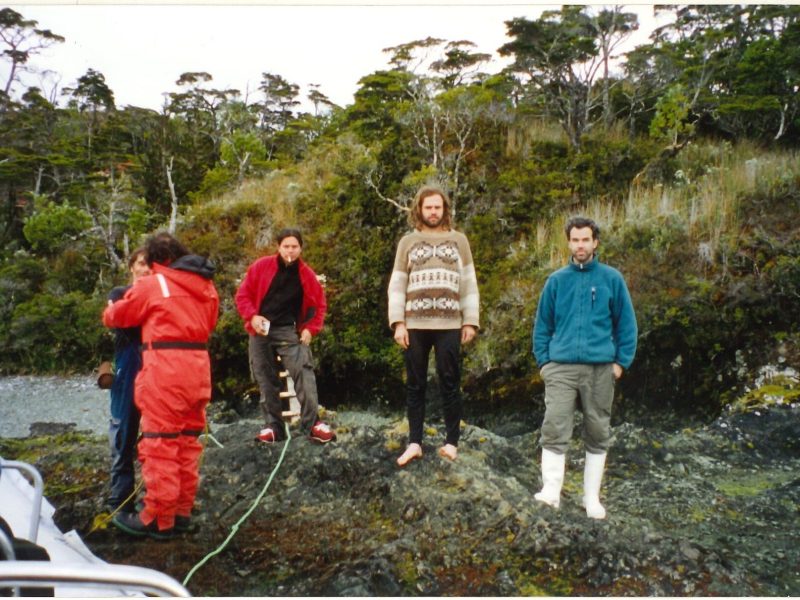
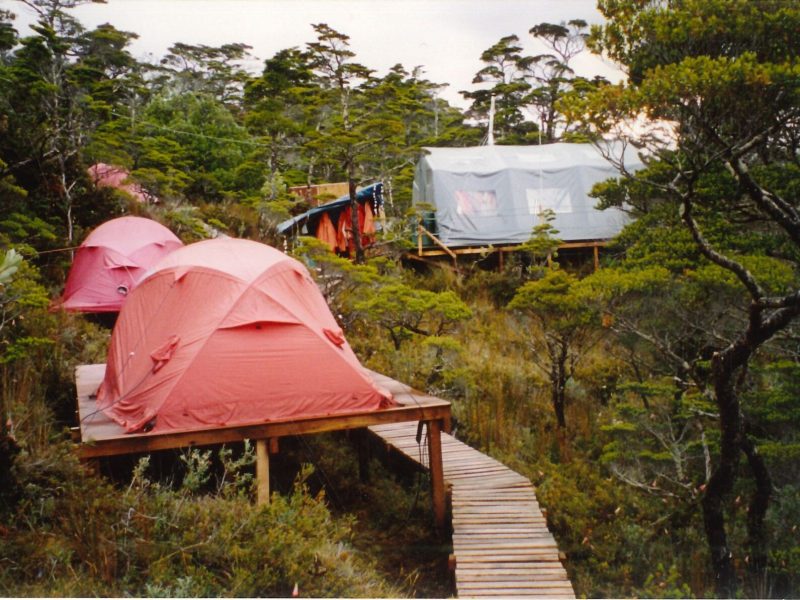
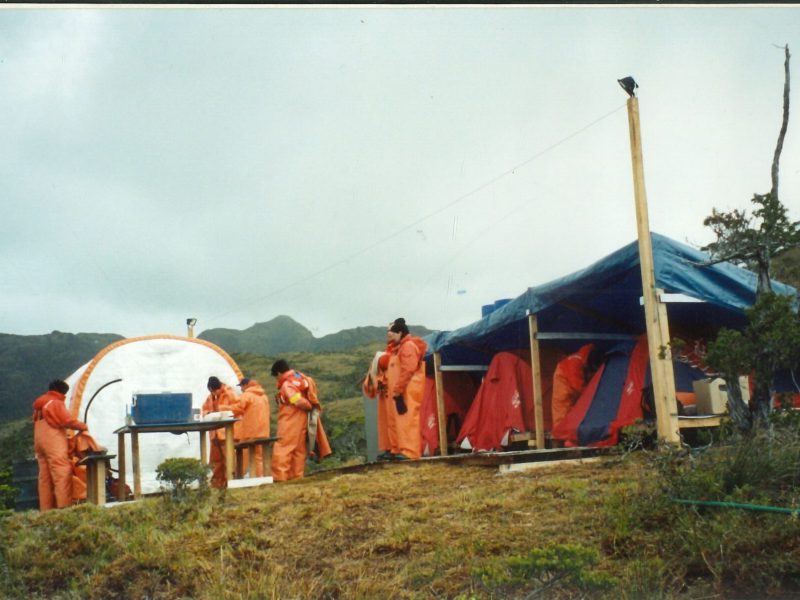
and Us
The knowledge accumulated over more than 30 years is initially based on the work of three biologists; Jorge Gibbons and Juan Capella in charge of scientific management and Carlos Valladares in charge of logistics and administration. In a first stage, descriptive information was collected on the birds and mammals in this area of the Strait (western), also cataloging, in the case of humpback whales, 250 individuals, many of which return each year. Some with proper names such as Fidelio, Carla, Domingo, Amanda, Iris, among others.
During this exploratory phase, when navigation was conducted using semi-rigid boats without cabins, we were supported on land by the fisherwoman "Doña Miguelina" (Miguelina Suarzo), who provided us with her ranch (a camp built from corrugated tin) located in Río Batchelor, across from Carlos III Island. Subsequently, a first and then a second Eco Camp were constructed on Carlos III Island at a selected site.
In this process, we developed alliances with institutes and universities that allowed us to develop different lines of research that have produced high-quality scientific knowledge for the Marine Park. Likewise, in the 20 years that WHALESOUND has been present in the Marine Park, the biologists and guides who have worked for the company, together with the participation of our passengers, have been photo-identifying each humpback whale fin they can capture, which has led us to have information that has been used for different research and scientific publications by our researchers and associates.
In this new stage, we have incorporated Citizen Science as a pillar of our outings. We believe that knowledge must be better linked to local communities, and as our team frequently navigates the Patagonian fjords and fire channels, we understand that we must be a platform that contributes to the knowledge of both our natural and cultural heritage.
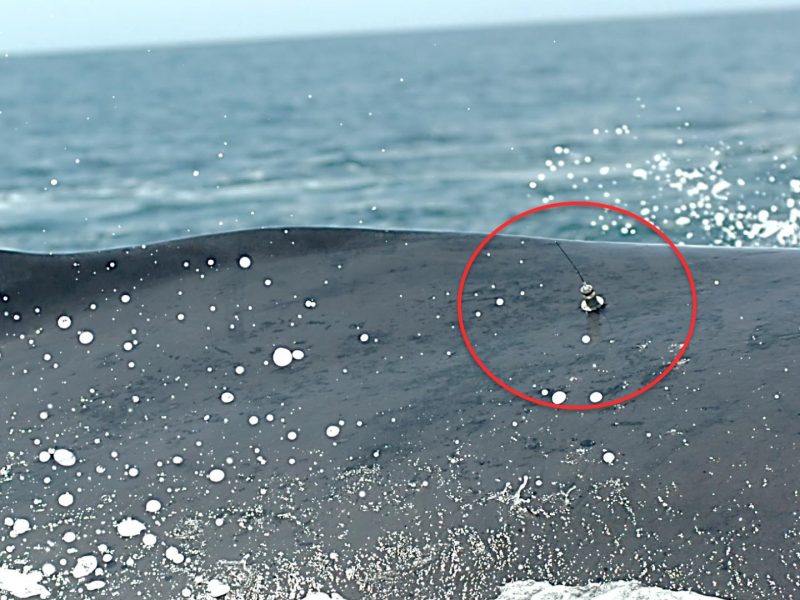
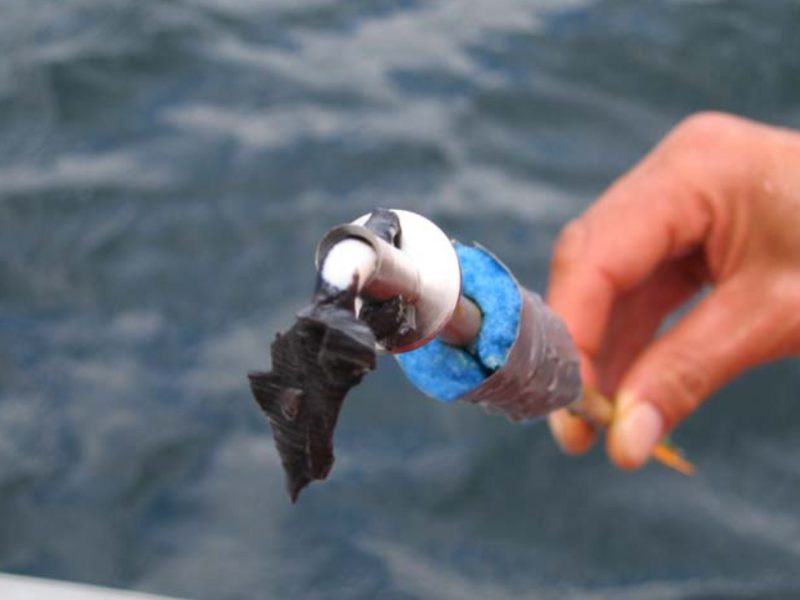
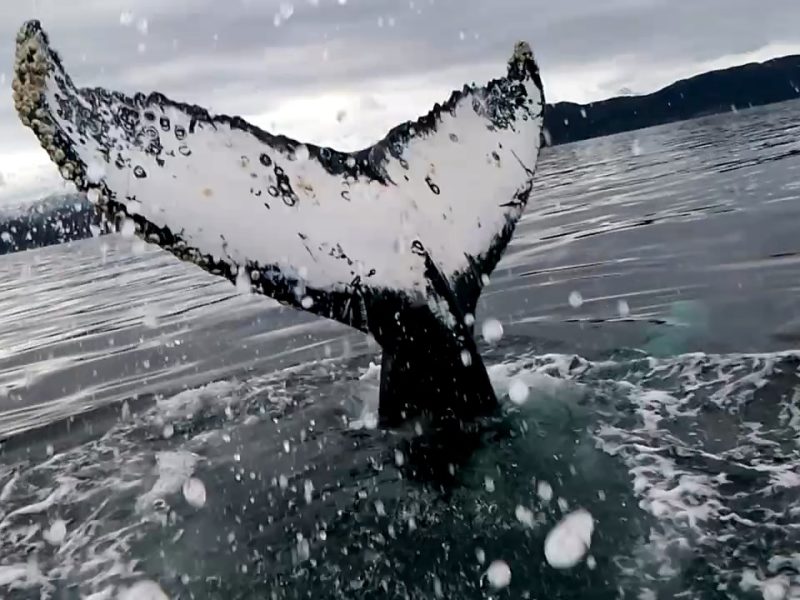
Team
From the beginning, the team's spirit of exploration and the desire to preserve the heritage of the fjords and canals stood out. Almost 20 years later, with a renewed team of young people, these principles have not changed, the experience has been added comfort and more cultural content, under the premise of offering a personalized service that respects the territory, the passengers and each other.
The young people from the origins of Whalesound continue to be leaders in the organization and have given way to this new generation that has taken leadership and comes to nourish with new ideas, thus new programs have emerged based on the accumulated experience and research.
Our goal is to create immersive experiences that allow you to connect with nature and local culture. You will find dedication and passion in every person in our organization, from the chef, crew members, guides to the sales manager.
Camp
WHALESOUND has a camp on Carlos III Island, in the middle of the Strait of Magellan, right in front of the Francisco Coloane Marine Park
The camp has 5 domes that allow the overnight stay of up to 10 passengers and a main dome of common space, where we will share scientific talks, conversations of the day's experiences, where we will eat and also where you will find bibliography of the regional history and about the nature of the fjords and channels.
Vision
"To be leaders in regional ecotourism, offering unique and sustainable experiences. We strive to preserve and promote both the biodiversity and cultural heritage of the destinations we visit, thus promoting awareness and a deep connection between our travelers and the environment.”
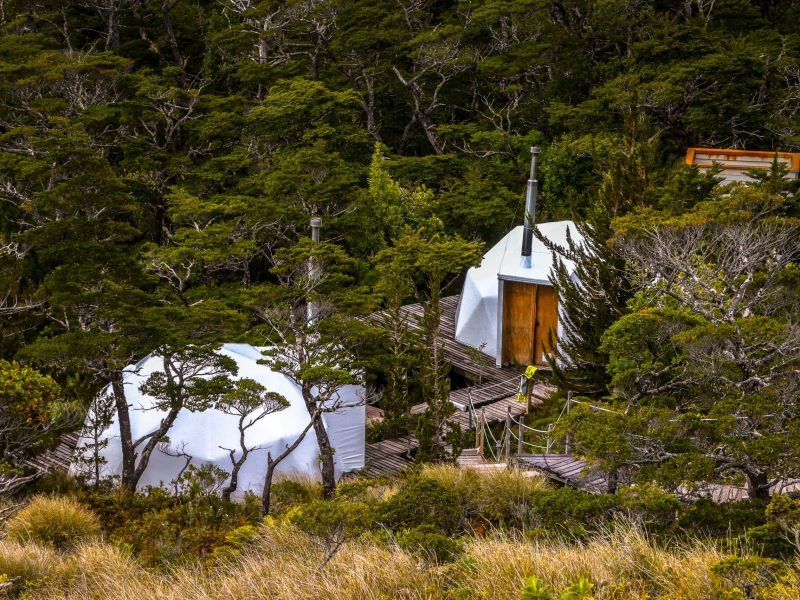
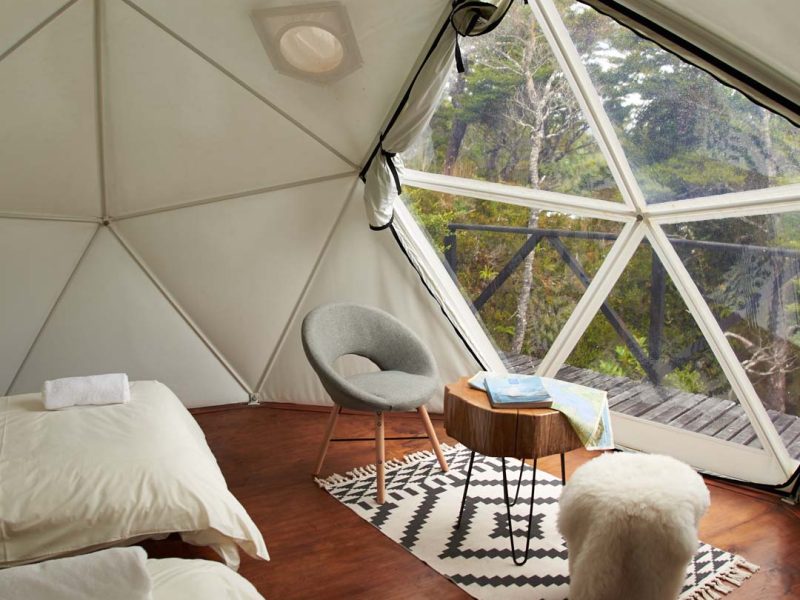
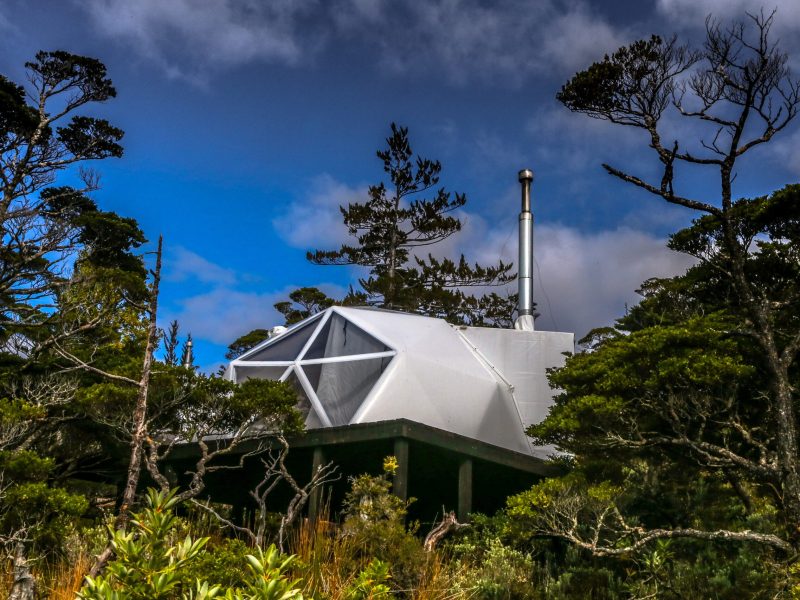
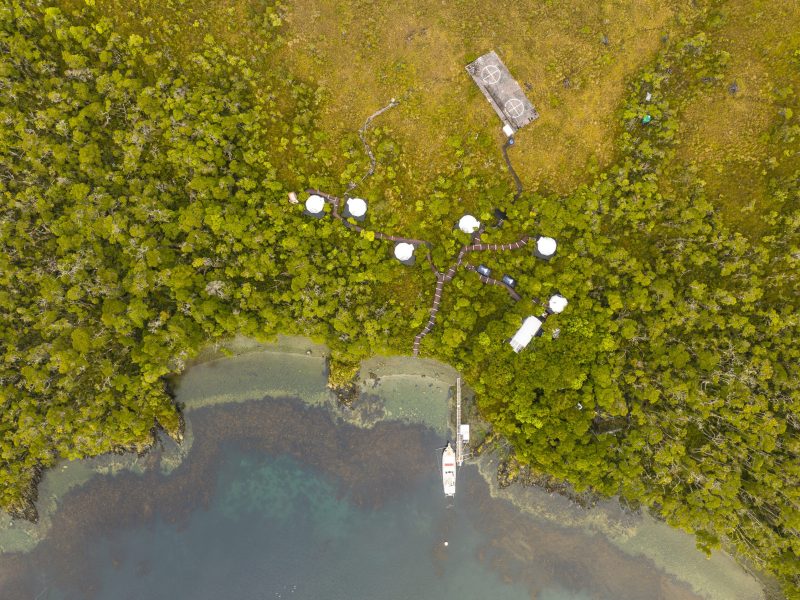
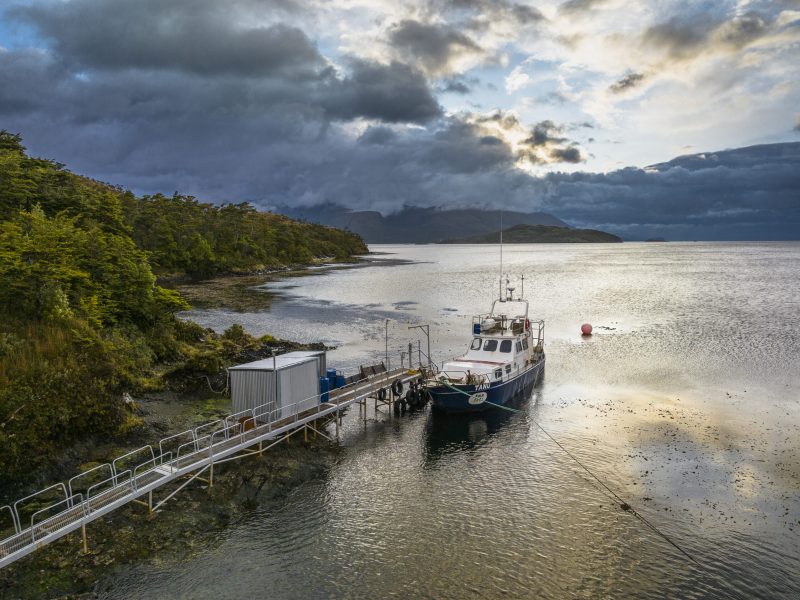
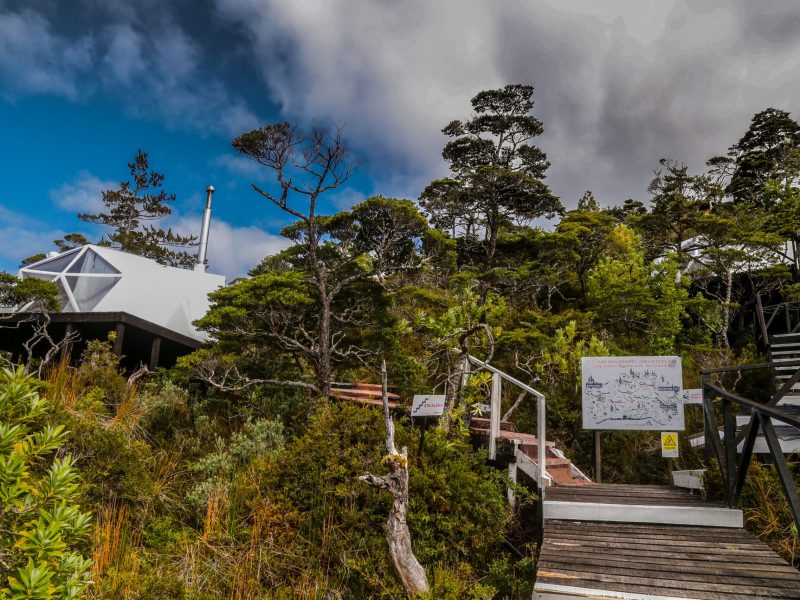
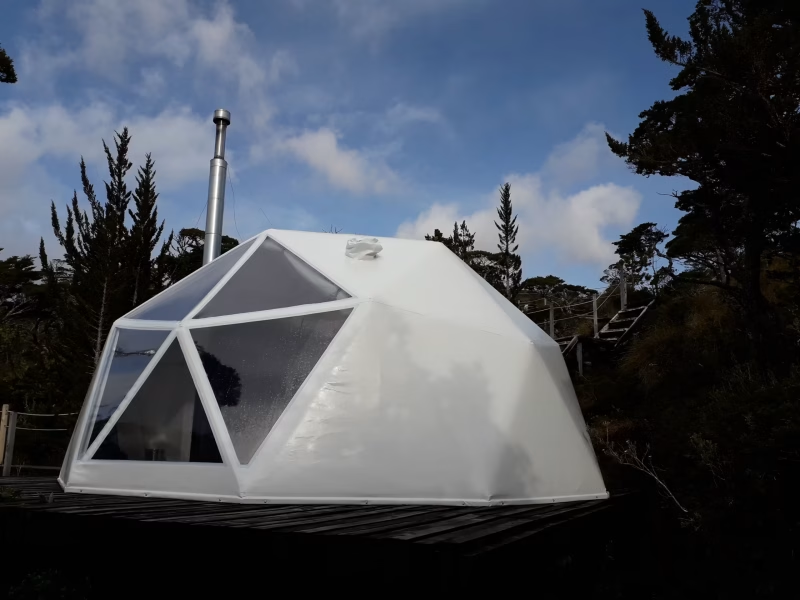
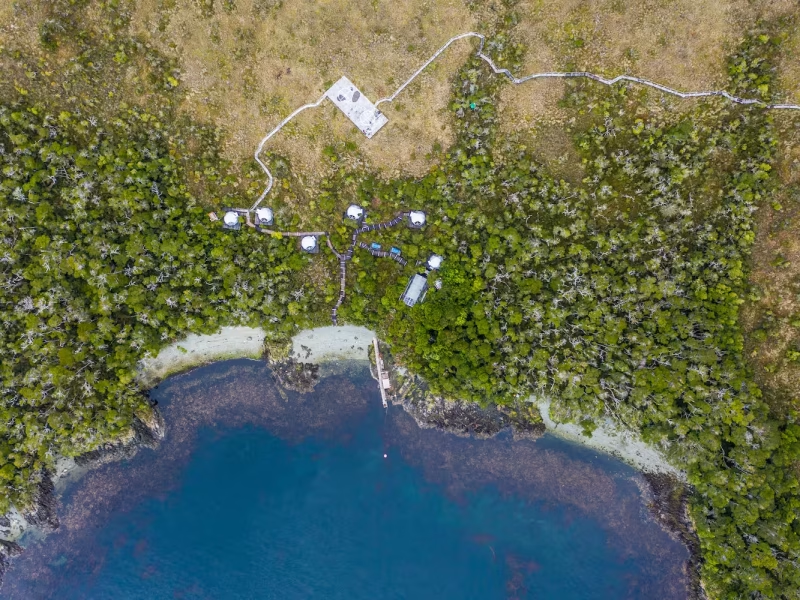
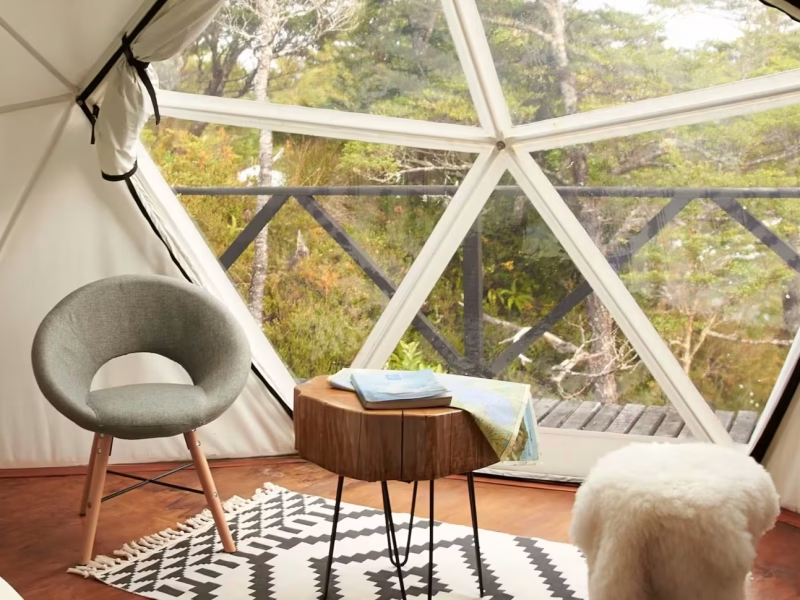
Tanu
It is a smaller vessel, 14.45 meters in length, adapted for exploration and long-duration navigation.
Characteristics
Overall length: 14.45 MTS
Covered Length: 13.00 MTS
Maximum beam: 3.69 MTS
Average DEAPH: 1.94 m
Passengers: 12 daytime 5 overnight
Life raft: for 16 persons
Speed: 7.5 knots
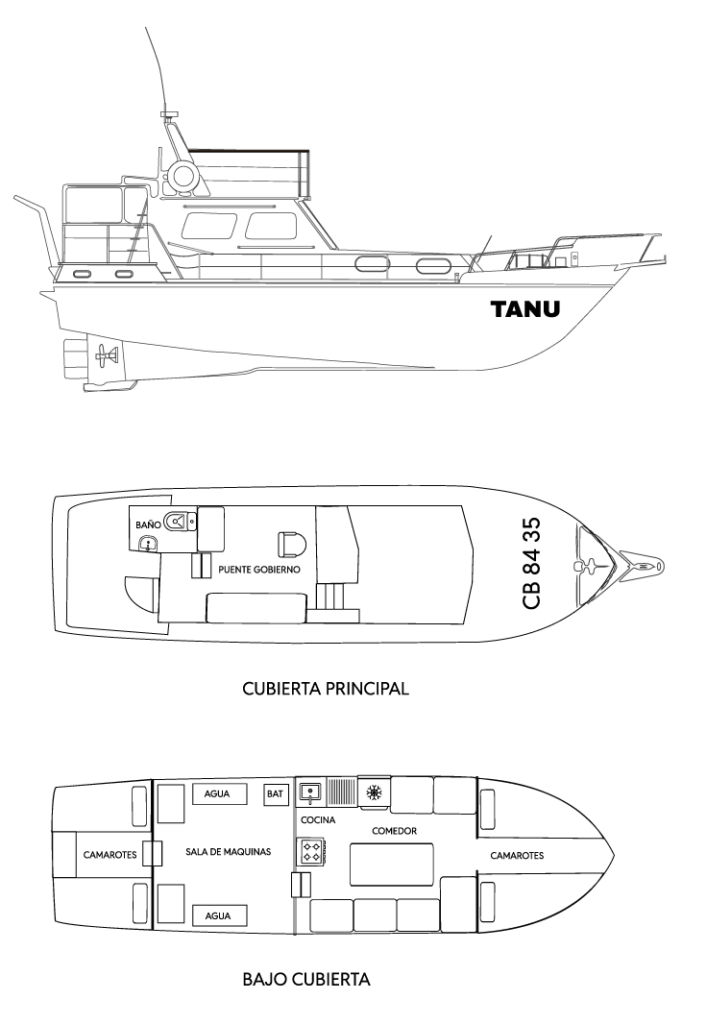
Estoa
Our new addition to the team, a 19-meter-long boat with a lounge for more than 30 square meters which will provide comfort for our new and more extensive navigation routes.
Characteristics
Overall length: 19.35 MTS
covered Length: 18.50 MTS
Maximum beam: 6.00 MTS
Average deaph: 2,575 m
Passengers: 30 daytime, 12 overnight
Life raft: for 50 Persons
Speed: 10 knots
